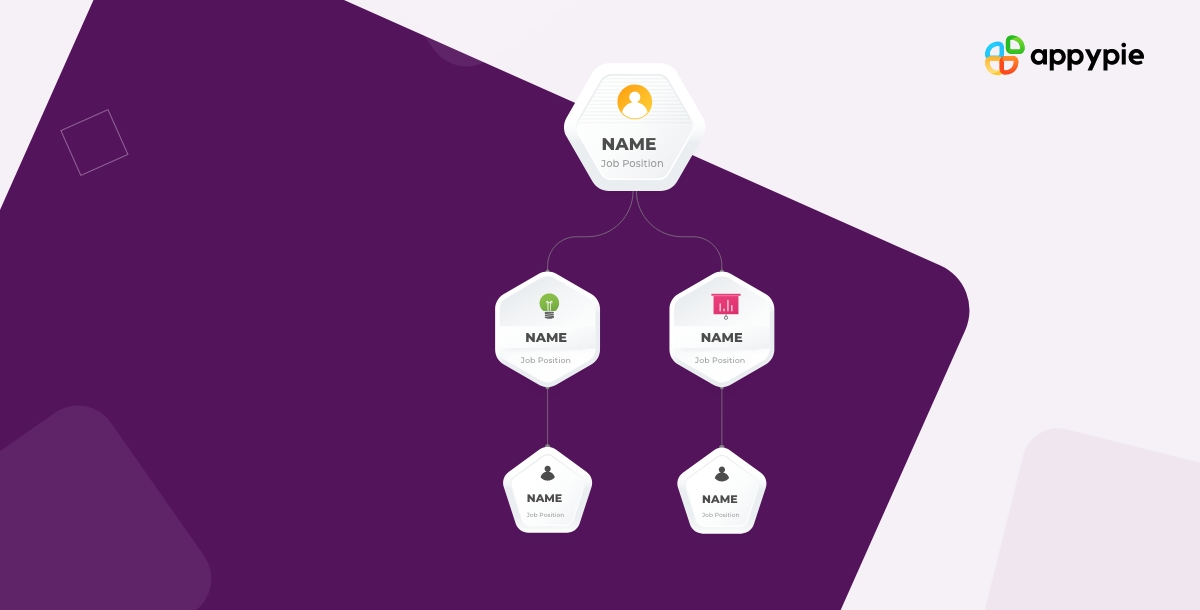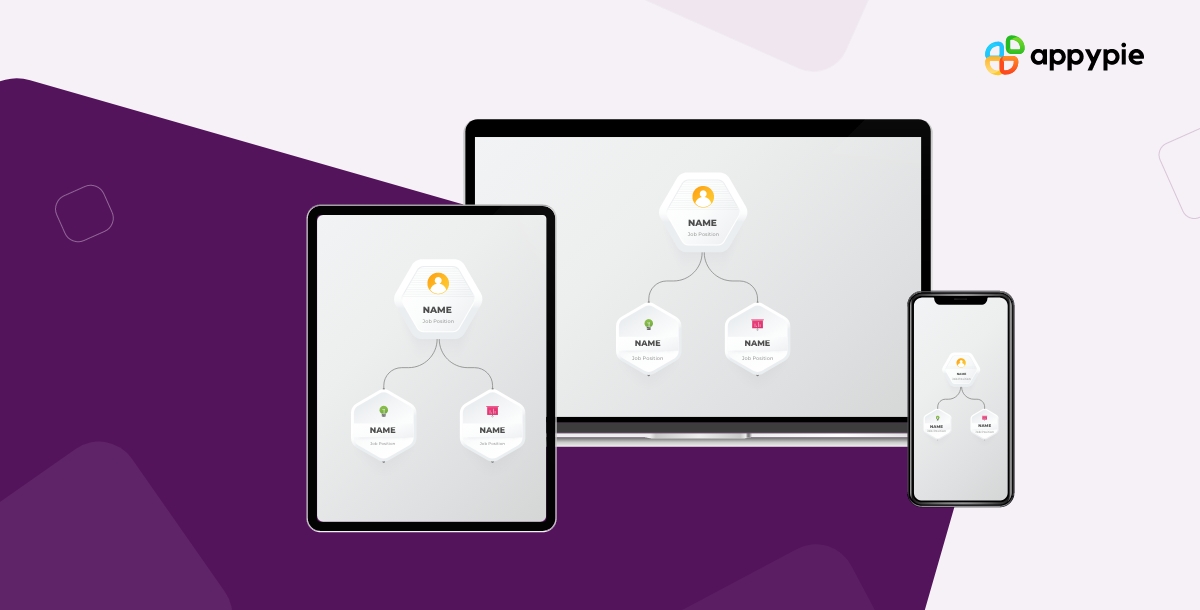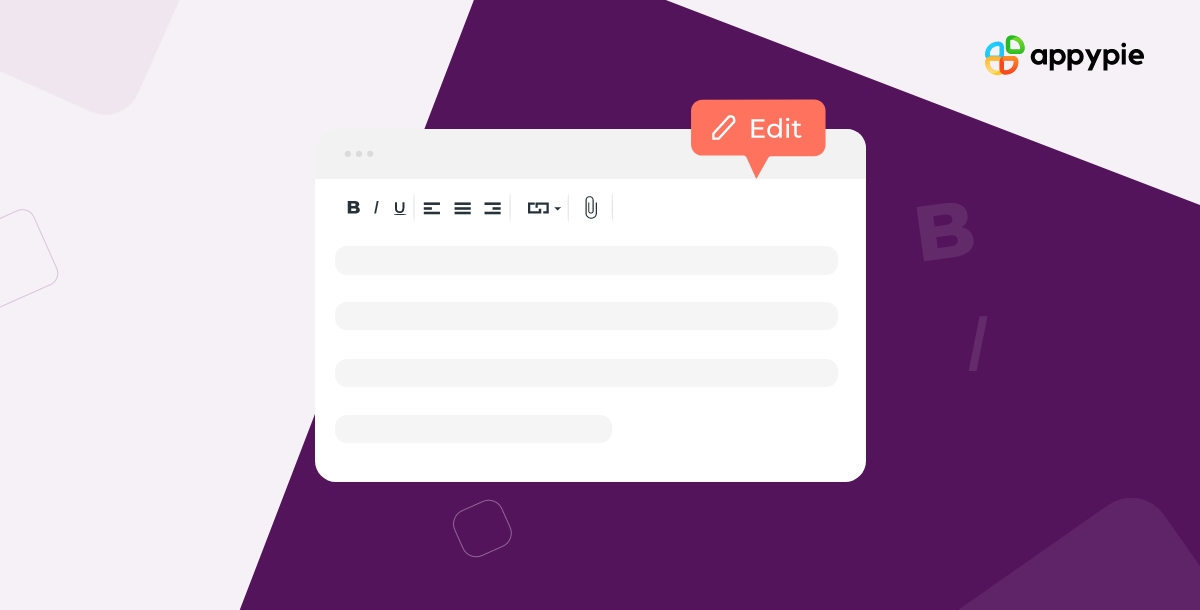10 Tips to create a Perfect Organizational Chart

Are you looking to create the perfect organizational chart for your business? If so, you're in luck. This blog will share ten tips for making perfect organizational charts. By following these tips, you'll be able to create an organizational chart that is both accurate and visually appealing. So, without further ado, let's get started. Before proceeding with the tips, let’s understand organizational charts' what ifs and buts. In addition, we'll also be providing information on how to create effective organizational charts.
A Basic Guide Tour to Perfect Organizational Charts in 2022
If you manage a large or small team, you know how important it is to have a well-organized structure. With an excellent organizational chart, it can be easier to communicate expectations and roles within a company.
In a business, the organizational chart is usually the visual display of who reports to whom in your company. It’s also often referred to as an organizational structure (or just structure) and can be as simple or complex as you need it to be. Keeping yours organized helps you see how your business operates daily and a perfect business infographic design makes your work easy at the same time. Your organizational chart also aids new hires in understanding their role within the company, which makes onboarding easier.
Advantages, Scopes, and Benefits of Organizational Chart
Advantages
The importance of using an organizational chart includes making it easier for employees to find the right person when they need something; improving communication between departments; streamlining operations by clearly identifying reporting relationships; reducing misunderstandings about job responsibilities, and highlighting any redundant functions or positions. Depending on your company, you can set up your chart in several different ways, so let’s take a look at some tips and tricks for creating an effective one for your organization.
Keeping tabs on employees and their performance is tricky in any business. And in a large organization with several teams, departments and branches, organizational charts can get extremely messy. Organization charts are often a company’s first line of defense when monitoring performance and keeping track of employees – not to mention a great way to stay organized and document processes. In addition, a well-designed organizational chart will make the company’s structure clear to everyone, which makes day-to-day tasks much easier for everyone involved.
Scope
Creating an organizational chart is probably the first thing that comes to mind when visualizing your company’s structure. They’re a standard tool used by businesses to display the hierarchy of positions and reporting relationships in the company.
However, creating an organizational chart is more than just filling in boxes and connecting them with lines. This visual representation of your company’s structure should be able to answer several questions about roles and responsibilities, performance evaluation, and team collaboration.
Unfortunately, many organizational charts are too simple or unnecessarily complex. Intelligent, effective organizational charts are straightforward and helpful in keeping track of employees and their responsibilities. This blog post will share ten tips on creating philosophical, effective organizational charts and some great examples to inspire you!
Creating an organizational chart can take a lot of work for many companies. An organizational chart is a visual representation of the hierarchical structure of a business, organization, or company. Creating a practical and valuable organizational chart with limited information and data can take time and effort. Still, with the right strategy and some forethought, you can create one that will help your company grow instead of just another piece of collateral or an afterthought.
Benefits
There are many benefits to creating an organizational chart as part of your company’s employee training programs. An organized workforce makes it easier for new employees to understand their roles and responsibilities, improves efficiency by cutting down on redundant tasks and assignments, You and helps secure, confidential information. Keeping these benefits in mind while creating your organization chart will make it more useful for your company in the long run.
When you start working for a new company, everything can seem overwhelming. There are so many people and names to remember it’s easy to get lost in the shuffle. Luckily, organizational charts help standardize how we see everyone in the company and their positions. An organizational chart is a visual representation of your company's structure. It explains who reports to whom, and what different departments within that organization do daily. This document lets employees quickly understand how other teams operate and their position within the company structure. This blog post will give you ten tips for rapidly creating intelligent, effective organizational charts!
So how can you create an effective organizational chart that will be easy for your team members to understand? Read on for some valuable tips!
Here are 10 Tips to help you create a perfect Organizational Chart for your Business
Organizational charts help business owners have a clear idea about the structure of their business. It shows who is in charge of what and who reports to whom. This makes it easier for employees to understand their roles and responsibilities in the company. Organizational charts are especially important for startup entrepreneurs who lack the experience and skills needed to organize their businesses and employees. A well-designed organizational chart will give them a sense of direction. We have created templates that you can use to create your own organizational chart. Here are some tips on how to create one:
- Define the Purpose of the Chart
Your organizational chart will assist your employees in knowing how the roles of all employees relate to each other within a company. The graphical representation of roles and responsibilities showcases a company's hierarchy to illustrate the reporting structure. For an internal or external structure, it’s always essential to have an organizational chart for better understanding.
- Format the Chart to a Single Page
Use a horizontal and vertical alignment to understand your intention behind the chart quickly. Try to fix the boxes on the single page as possible! Picking the number of flat boxes can widen your chart, so try categorizing the chart in a rough format first.
- Use Standard Symbols
The symbols are the blood that pumps out the interest of any eye viewing the chart. Hence, using the standard symbols is recommended to have a clear picture of your chart. In addition, the standard symbols convey a definite meaning to the reader, like arrows, lines, slashes, and many more.
- Label Clearly
Remove the names and try to focus on roles and responsibilities. Before just elaborating on the individual name with its roles and responsibilities, try to clarify what the particular part speaks. To design the organizational charts, think about how you would create a diagram for a company starting from scratch. What key roles would you include? What teams would you build? Who would be accountable for which business aspect?
- Use Colors Wisely
Eventually, color pulls down the interest of an individual for a specific thing. Moreover, try to pick soft colors and darken your texts, as the foremost intention of the chart is to let the employees know about each department's roles and responsibilities. Therefore, colors such as white, dull pink, transparent sky blue, and sea shadow green will assist your reader in focusing on the written material. You can also use Appy Pie's Image Color Picker tool to pick a perfect color, or a combination of colors for the better presentation of the organizational chart
- Make your Chart Remotely Accessible
Organizational charts are for every working person, so it’s always asked to make the chart accessible to everyone. Due to COVID-19, organizations and working professionals are considering working from home, and the chart clarifies the roles and responsibilities that one holds to improvise communication.
- Adopt easy Software Tools
We all live in the digital era where tools are our most incredible resource to achieve any goal. Therefore, you can pick up one software out of thousands of online tools to design and implement organizational charts. In addition, online tools such as Appy Pie's Graph Maker allow you to create, update, and share the chart with your team members.
- Proofread Carefully
Designing and content go parallel with each other; hence, sometimes, we click the backspace or delete button, which may erase the context and change the meaning of a sentence or phrase. Therefore, proofreading is a primary step before launching any subjective innovation.
- Update as Needed
Employees are never your fixed assets; they continuously change their job. So, in addition to this context, you need to regularly update your organizational charts for a clear copy of the accountabilities.
- Get Feedback
Feedback is merely essential in all stages. So, once you’re done designing the organizational chart, ask for input from your employees. Different brains have multiple concepts and ideas; you never know who can come up with the better version. Or, if you’re lacking any essential points, someone will probably figure it out! So, feedback is vital for your organization.
Following these tips, you can create an organizational chart that will be clear, concise, and helpful for your team.
Summary Up!
We cover as much as a proficient or a beginner needs to know about organizational charts, their importance, benefits, and tips to create a perfect chart. If you’re unclear about any point or facts, then contact our support team or drop us your doubts.
Related Articles
- 16 Best Intercom Alternatives for Customer Support in 2023
- MoReVQA: Exploring Modular Reasoning Models for Video Question Answering
- Master Sales Probing: 55 Key Questions to Engage Prospects
- 10 Advantages of Chatbots in the Healthcare Industry
- Top 10 Google Drive Integrations to Improve Your Team Productivity
- 18 Google Docs Features You Can’t Afford to Miss
- Tan Color Decoded: Hex Code, Significance, and Stunning Combinations
- Hand Lettering For Beginner’s: A Step-by-Step Tutorial Guide
- Cyber Monday: Tips to Drive Sales in 2022
- 20 Tips to Design Great UI for Your Mobile App








 Remove the names and try to focus on roles and responsibilities. Before just elaborating on the individual name with its roles and responsibilities, try to clarify what the particular part speaks. To design the organizational charts, think about how you would create a diagram for a company starting from scratch. What key roles would you include? What teams would you build? Who would be accountable for which business aspect?
Remove the names and try to focus on roles and responsibilities. Before just elaborating on the individual name with its roles and responsibilities, try to clarify what the particular part speaks. To design the organizational charts, think about how you would create a diagram for a company starting from scratch. What key roles would you include? What teams would you build? Who would be accountable for which business aspect?








